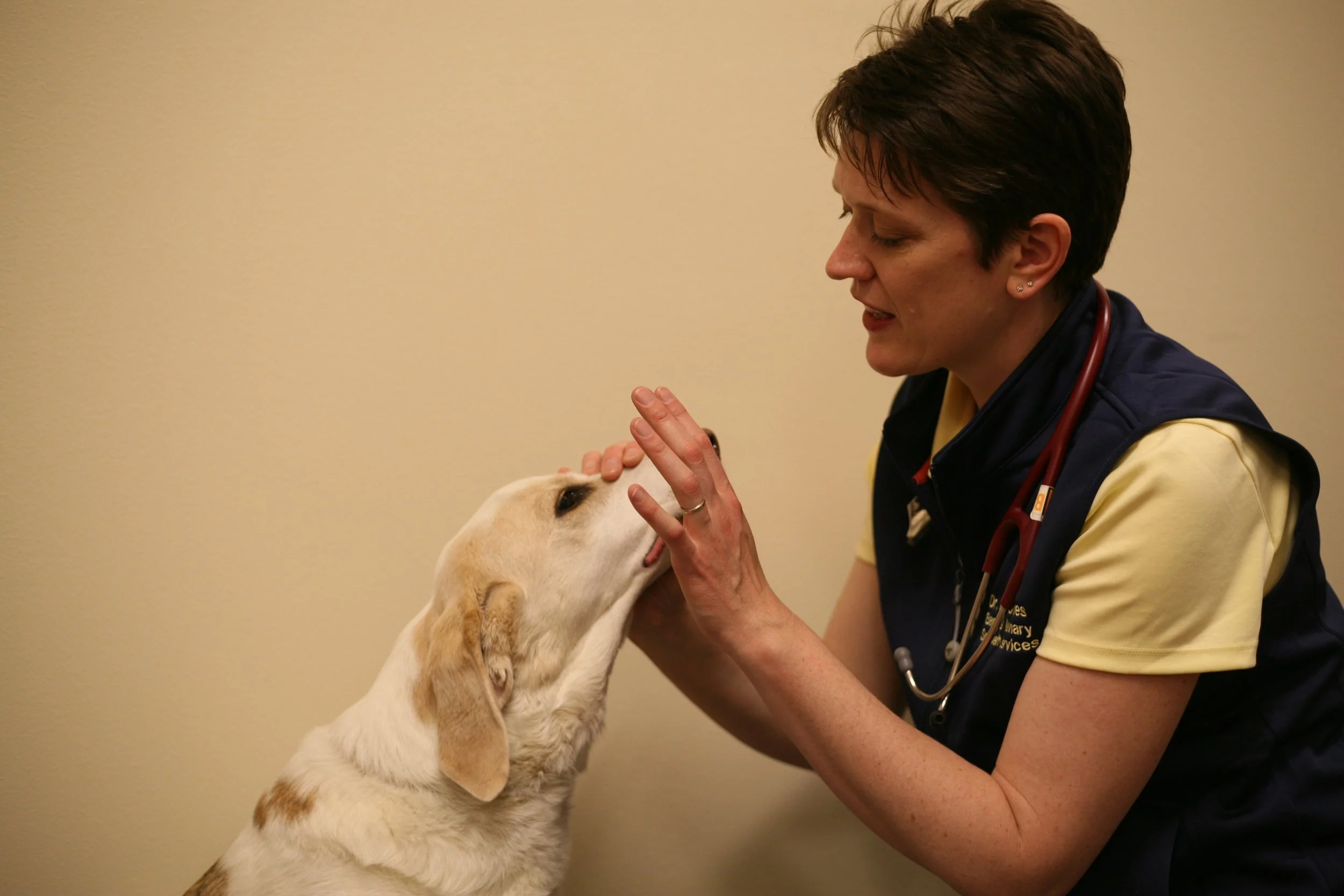Imagine with me that you are presented with a 10 kg small breed dog on Tuesday morning with a history of neck pain. This dog had a history of neck pain 1 year ago that underwent full work up, at your local University or specialty hospital, and was diagnosed with a disc herniation. The clients pursued surgery, and recovery was smooth and complete. The clients were thrilled...until yesterday. Now, they're angry.
How likely is it that this dog has herniated ANOTHER disc in it's neck?
It is a good question, and one that we have some recent data that might help answer this question. A study out of the UK looked at the recurrence rate of cervical pain in dogs that had a prior disc herniation diagnosed via advanced imaging.
119 dogs in the study, 36 dogs had signs of recurrent neck pain or a cervical myelopathy.
36/119 had medical management following diagnosis of IVDH
13/36 (36%) had a recurrence of signs
Recurrence was more likely at the same intervertebral disc space
83/119 had surgical correction following diagnosis of IVDH
27/83 (33%) had a recurrence of signs
Recurrence was more likely at neighboring intervertebral disc space to the original disc herniation
Surgical correction did not decrease the odds of recurrence in this study. Important: We don't know if these dogs underwent surgical fenestration at the time of their first surgery, or not.
Recurrence was within 2 years of the original diagnosis of a disc herniation for 80% of the dogs in this study. (Note: this means that 20% it was longer than 2 years!)
** We don't know that every one of the dogs had a second disc herniation but the few that did have work up did have a disc herniation confirmed.
The data reported in this study suggests that medical and surgical correction of cervical disc herniations does not change the risk of new onset cervical pain. Reported ranges in the literature for recurrence of cervical pain with surgical correction are between <10-30% (and probably more towards the 0-15% range in the cervical spine) so it is at the high end of reported recurrence. Reported recurrence with medical management is slightly more difficult to track but may be in the 30-40% range. Therefore, it is surprising that the authors saw a similar recurrence for medical vs surgical correction. This may come down to the surgical correction performed, which we don't know from this study. We do know that none of the dogs with surgical correction had a recurrence at the site of correction.
What should we tell the client before us? Surgical correction for a ruptured disc corrects the issue at that disc, but may not address degeneration at distant sites. Sadly, their pet may be faced with a recurrence of another disc herniation. If they're up for another workup and possible surgery, it's time to start the process for referral. If they'd like to give medical management a try, get started on some pain management and bed rest (avoid those steroids if you can in these cases!) and keep a close eye on the dog. Weekly neurologic exam would be recommended, if possible.
Link: https://onlinelibrary.wiley.com/doi/epdf/10.1111/jsap.13480
This Tidbit took a slightly different approach than my usual updates. I typically try to pull 1-2 key points from an article that I find useful, and that I think you'll find useful. This time, I decided to represent a study that wasn't highly powered, that also didn't provide clear, convincing data to support a specific question. We all like black and white scientific data that we can read, digest and apply but honestly, that is a minority of what I read on a daily basis. This TidBit had more "waffling" in it because I wasn't fully convinced the data provided would change my practice. How did this report strike you? Did you find it useful, or not? As always, thanks for reading!



